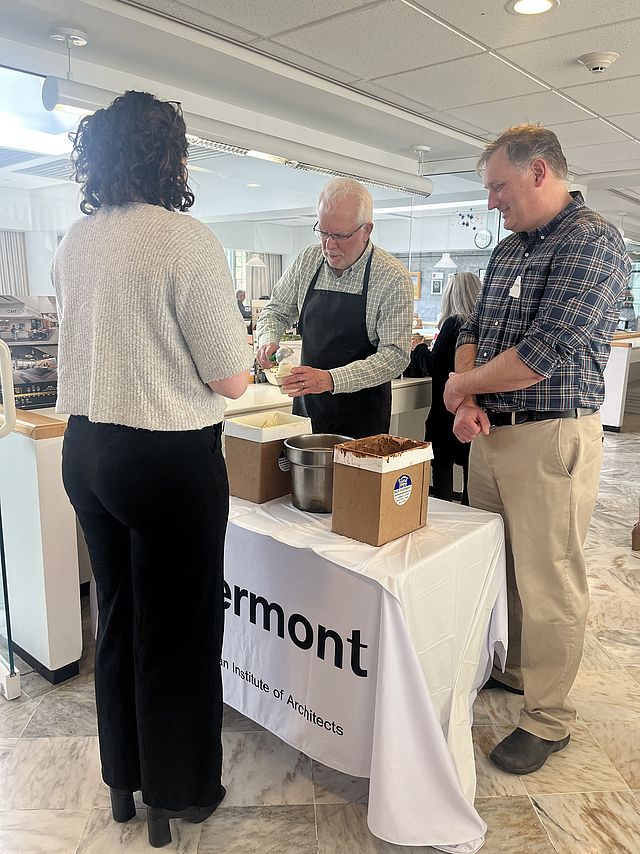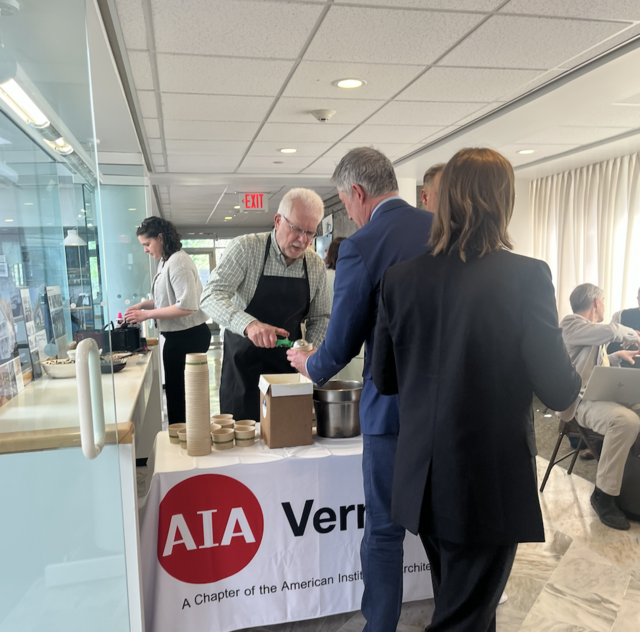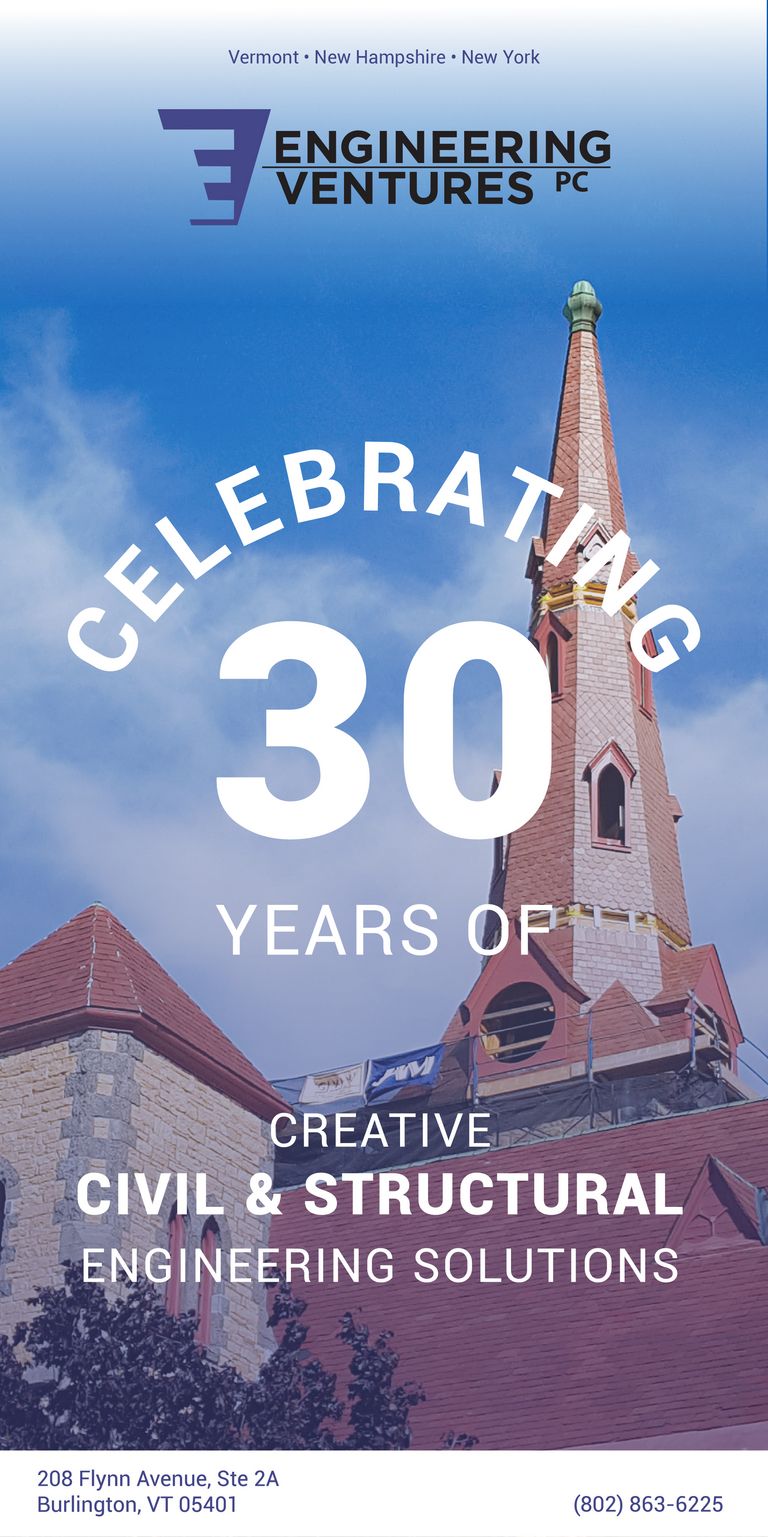AIAVT's Legislative Recap
DRM Legislative Update by Andrew Brewer, John Alden, and Sarah O Donnell
The 2025 legislative session was marked by high-stakes negotiations, late-night committee standoffs, and a clear sense that Vermont’s long-standing policy challenges—especially education and housing—can no longer be delayed. Lawmakers entered the session under pressure from voters frustrated by rising property taxes, aging school infrastructure, and the lack of available housing. While some major proposals collapsed under the weight of political disagreement, others crossed the finish line in the final days—setting the stage for transformative policy changes in the years ahead.
AIA Vermont’s Public Policy Committee (PPC) made measured progress during this hot and cold legislative session. With the ongoing objective of educating legislators on the need for a functioning energy code, supporting housing affordability measures, and the need for funding for school construction, PPC members took advantage of several key opportunities to get “face time” with legislators. Matt Bushey, AIA, held the role of AIAVT representative on the Building Energy Code Working Group throughout this legislative session and has been a consistent voice for our advocacy efforts, specifically that VT needs to increase training and education, utilizing the state’s existing network of energy professionals, establish the IRC as Vermont’s residential building code for single family homes, and that VT should name DFS as the Authority Having Jurisdiction over all building and building energy codes.
PPC members convened at the State House in April for our first Ice Cream Social; a novel way of connecting with legislators, the social was held in the State House cafeteria one afternoon this spring and saw many lawmakers venturing out of their committee rooms to pick up a sweet treat and converse with PPC members on our top three legislative topics: The Need for Building Code Reform in Vermont, our Support for State Funding for School Construction, and AIAVT’s Support for Housing in Vermont.
The following bills held PPC’s focus throughout the session:
Education Reform and School Construction: H.454
After an extended impasse and a last-minute June vote, the General Assembly passed H.454, a sweeping education reform bill with long-term implications for both school governance and public infrastructure. For AIA Vermont, one of the most important provisions was the revival of state-supported school construction aid—marking the first meaningful movement on this issue since Vermont’s school construction program was frozen in 2007.
H.454 establishes a new School Construction Aid Advisory Board, which will guide future capital investment decisions and recommend funding priorities to the Legislature. The board includes eight members, four of whom are appointed specifically for their expertise in education, construction, real estate, or finance. AIA Vermont intends to request that one of these seats be filled by a licensed architect to ensure that school design, energy performance, and public use are factored into statewide planning.
While the bill does not appropriate new construction dollars directly, it creates the governance, structure, and political momentum needed to restart the conversation. Cost containment, facility equity, and district consolidation are core goals of the legislation—and architects will have a key role to play in helping communities design functional, durable, and future-ready schools.
Beyond construction, H.454 makes major structural changes to how Vermont funds and governs public education. It replaces the current pupil weighting model with a foundation formula, launches a process to redraw supervisory district boundaries statewide, and sets uniform class size and graduation standards. These changes will likely have ripple effects on school facility needs, particularly in rural and aging districts where consolidation or modernization may be required to meet new expectations.
Building Codes and H.181
AIA Vermont played a central role this session in educating lawmakers on the state’s fragmented and inconsistently enforced building code system. During testimony on H.181, PPC members Matt Bushey and Bob Duncan laid out how Vermont’s current energy codes—particularly the Residential Building Energy Standards (RBES)—fail to ensure compliance, lack consistent enforcement authority, and are poorly understood across the building sector.
H.181 proposed several foundational changes, including expanding the Division of Fire Safety’s authority to enforce residential codes, creating a statewide RBES certificate database, and launching a contractor certification program. These components have long been on AIAVT’s wish list and have been lobbied for in the past via AIAVT Position Papers. While very satisfying to see them included, the bill ultimately did not advance in the first year of the biennium. It will hopefully serve as a strong platform to elevate long-standing industry concerns and shape the work ahead.
Many of those reforms will now move into the Building Energy Code Working Group (BECWG), where AIA Vermont is a core participant. The group will continue to explore energy code modernization, enforcement mechanisms, builder education, and state oversight—laying the groundwork for legislation in 2026.
S.127 and the Built Environment
S.127, the session’s flagship housing bill, passed with strong bipartisan support and introduces several provisions relevant to the design and construction community. Most notably, it creates the Community Housing and Infrastructure Program (CHIP)—a new tool for municipalities to finance the water, sewer, roads, and public infrastructure needed to support housing development.
S.127 also advances policy on brownfield redevelopment and includes provisions to encourage the adaptive reuse of closed school buildings—a growing priority as district boundaries are redrawn and underused facilities emerge. Echoing the AIA National theme of optimism and opportunity in the face of change, we hope these policy shifts open new possibilities for architects working at the intersection of housing, community revitalization, and public reuse.
Looking Ahead
The 2025 session laid critical groundwork for how Vermont approaches public infrastructure, energy standards, and school facilities. AIA Vermont was at the table during key conversations and will continue to advocate for policies that elevate design, sustainability, and community needs.
As work begins on implementing H.454, shaping the BECWG’s recommendations, and preparing for new housing infrastructure investments under S.127, architects have a unique opportunity to help Vermont build smarter, more equitable, and more resilient spaces for the future.
See the full list of bills that PPC and DRM were tracking this session: http://206.162.242.133/AIAVTLegislativeUpdate.html






